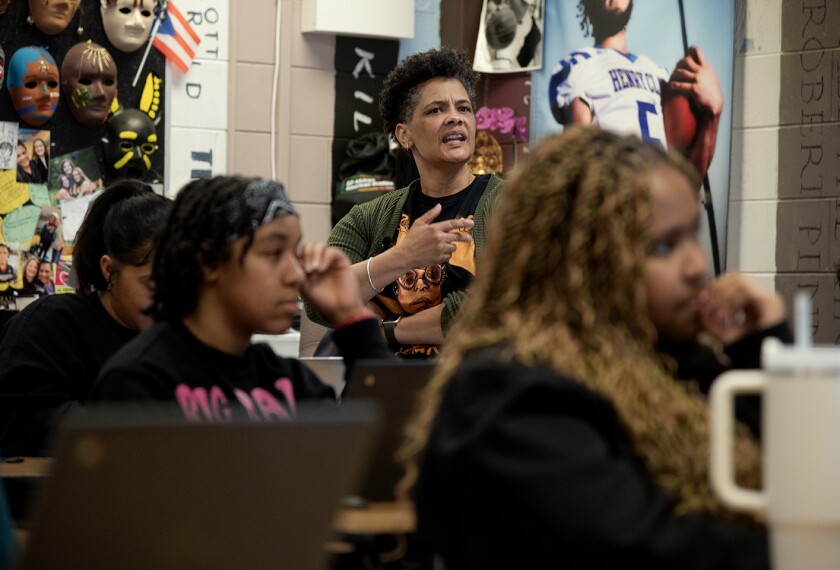From therapy dogs to mental health days, schools have been trying every trick in the book to ease the student mental health crisis.
Now teachers have another resource they could use: a high school curriculum that teaches students what the science of psychology says about how to make wiser choices and live happier, more fulfilling lives.
“Psychology and the Good Life,” also known as the “happiness class,” is based on a Yale University course that psychology professor Laurie Santos created and has taught since 2018.
The class became Yale’s most popular, with more than 1,000 students enrolled the first time it was taught. It went viral on- and off-campus, and Santos received emails asking for a version for younger learners.
But even before receiving emails asking for the high school version, Santos knew that she wanted her students to get the skills earlier in life.
“I was constantly frustrated by the fact that Yale students came into college without knowing these evidence-based strategies that they could use to feel better,” she said.
In January, Santos launched a free Coursera class for teens and a free high school curriculum for educators. The curriculum includes a syllabus, video lectures, activities to help build good habits, support resources, and classroom tips.
The class examines the definitions of happiness and well-being, the misconceptions about happiness and why those misconceptions exist, how to change behaviors and thoughts, and how to put these strategies into practice.
The high school version doesn’t differ too much from the college version, Santos said, because “the strategies that science shows can make us feel better are pretty consistent across the teenage age range and the adult age range.” The high school version just has examples, situations, and contexts that are more relevant to high school students.
Practical skills with immediate applications
High school teachers who have tried Santos’ materials through a pilot program or just by word of mouth said it’s made a difference in their classes.
Adam Piccoli, a special education teacher for Pequannock Township High School, in Pequannock, N.J., has incorporated some of Santos’ strategies into his lesson plans since last school year. For example, when his students are reading Frankenstein, he’ll give them a research assignment on how social isolation affects mental health and ask them to incorporate their findings in another writing assignment on how isolation affected the mental health of the book’s characters.
“Students respond well because it’s practical skills that have an immediate application to them,” Piccoli said. “They see the effects of these immediately in their minds, they feel a jolt of happiness, and so I find the lessons to be helpful to mix in and connect to the course content.”
Mark McNeal, an English teacher for Lake Oswego High School, in Lake Oswego, Ore., also started out incorporating the psychology of happiness lessons into his English classes, but he wanted to give more emphasis to it, so he started an elective class focused on that topic last school year.
A lot of his students tell him how much they enjoy the class and having an opportunity to focus on themselves, McNeal said.
One challenge, McNeal said, is figuring out how to teach all the materials without overwhelming his students.
“The number one thing that has made the class successful, even though I’m still trying to figure out what exactly I’m doing, is just being willing to admit that I’m not the authority here,” McNeal said. “The students are turning it into a forum for figuring things out together.”
There are also students who blow off the assignments, but McNeal said he uses that as a way to talk about students’ motivation and tie it back to behaviors that lead to a more fulfilling life.
While it’s not only up to schools to solve the student mental health crisis, Santos said it’s important that everyone start talking more about mental health and give kids the strategies they need to deal with their emotions.
Both Piccoli and McNeal emphasized that the happiness class has been helpful for many of their students and that it should be a required class for high school students.
“It has a practical, real-world application that has an immediate effect,” Piccoli said. “I think that’s lacking from a lot of the skills and content that we teach in public schools in general.”
Because schools today are “dealing with a generation of very stressed-out kids,” it’s important to give them a class like the happiness class, even if it’s “for no other reason than to just give them a break in their day to think about themselves,” McNeal said.






